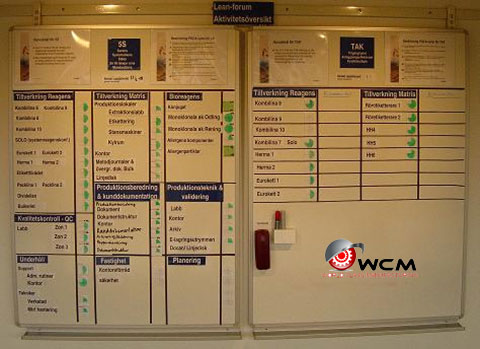
5S Certification may be as informal as making your own award when your workplace first passes its internal 5S Audit, but it is an important component in having a complete and successful 5S environment.
The purpose of performing 5S Certification is to visibly demonstrate both progress and compliance. This is especially important to make improvements in a large workplace with many employees.
Planning is important: agree on the criteria for awarding a 5S certificate. The criteria should be strict enough that it will require significant effort to achieve certification. If you don't award the certificate the first time – because there still are deficiencies – that will enhance the credibility of the process.

As in prior 5S phases, appointing a team is a necessary step. The people should know the workplace and the 5S goals well, care about the details, and be respected as authorities in the workplace.
Publicize the process and report regularly on the progress. Some ways to do this are:
Design a great diploma and display it prominently. You may want to plan for periodic re-certifications – set aside a place on the diploma for additional annual gold seals, for example.
External consultants are normally not prepared to offer a stand-alone 5S Certification.
However, 5S is a fundamental part of TPM (Total Productive Maintenance). The JIPM (Japan Institute of Plant Management) does offer a "TPM Award" for excellence. If your company pursues TPM, earning this award would be a significant achievement and a clear indication of 5S compliance.
By Oskar Olofsson, author of the book "Succeeding with 5S"
Enhance your 5S implementation and sustenance with our intuitive new app. It offers:
The app is developed by Oskar Olofsson, a renowned Lean expert and acclaimed author of "Succeeding with 5S". Harness the power of Lean management at your fingertips!


Succeeding With Lean Leadership

Succeeding With 5S

Succeeding With Standardized Work